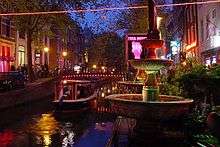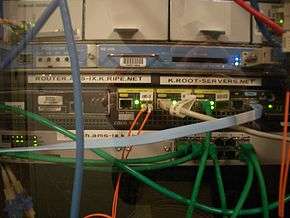Canon of Amsterdam






The Canon of Amsterdam is a list of fifty subjects, called 'windows', containing important events and developments in the history of Amsterdam.
Contents
The Canon of Amsterdam consists of 50 windows. From the foundation of the Dam in the river Amstel around 1250 up to the taking into service of the world's second largest internet node, known as the Amsterdam Internet Exchange, each window symbolizes a characteristic period in the history of Amsterdam.
All 50 windows together form a framework which offers a view of history and of the developments which made the people of Amsterdam what they are today.
Origin
The initiative was taken by VVD party group chairman Eric van der Burg, who submitted a motion to the city council which gained unanimous support. The canon was presented on 3 September 2008 by a specially formed committee, for which professor Piet de Rooy was its chairman, to mayor Job Cohen in the Amsterdam Museum, during which event De Rooy was awarded the Zilveren penning van de stad Amsterdam.
The city's residents were involved in the selection of the canon. Readers of newspaper Het Parool could submit suggestions for the selection of the windows. Those that were interested could, up until 4 October 2008, via the website of the newspaper, influence the final selection of windows which at the end of that year was published as a book. Visitors of the website could suggest their own windows. The suggestion had to be supported with strong arguments. The person submitting the suggestion also had to indicate which window was to be replaced with their suggested window. The Canon of Amsterdam contains and will always have 50 windows.
Changes and final list
The final version of the Canon of Amsterdam was presented to councilwoman Carolien Gehrels in the form of the book De canon van Amsterdam in the Amsterdam Museum on 28 November 2008. After reactions from Amsterdam residents, several small changes were made. The first window was changed to reflect the findings of a recent scientific publication, which placed the origin of the history of Amsterdam some two centuries before what was previously thought to be the start of habitation of the area. A new window was added with the 1928 Summer Olympics and two windows about Willem Treub and Floor Wibaut were merged and became 'Gas and water socialism'.
The fifty windows
- 1250 – The Dam
- 1275 – Toll Privilege of Amsterdam
- 1345 – The Miracle of Amsterdam
- 1421 – Amsterdam City fire
- 1482 – City Walls
- 1485 – The oldest merchant book
- 1535 – The Anabaptist uproar
- 1578 – The Alteratie
- 1596 – The Penitentiary
- 1602 – The East India Company
- 1609 – Amsterdam Exchange bank
- 1612 – Grachtengordel
- 1617 – Spanish Brabanter
- 1631 – Westerkerk
- 1632 – The Athenaeum Illustre
- 1642 – The Night Watch
- 1648 – City Hall
- 1662 – Firma Blaeu
- 1671 – Great Synagogue and Portuguese Synagogue
- 1683 – Society of Suriname
- 1700 – Buitenhuizen (country homes)
- 1762 – Hope & Co Bankers
- 1777 – Felix Meritis
- 1808 – Royal Palace of Amsterdam
- 1828 – Algemeen Handelsblad
- 1838 – Artis
- 1864 – Paleis voor Volksvlijt
- 1876 – North Sea Canal
- 1885 – Vondelpark and Museumplein
- 1890 – Kees de jongen
- 1894 – General Diamond Workers' Union of the Netherlands
- 1896 – Gas- en watersocialisme
- 1900 – De Pijp
- 1917 – Plan Zuid
- 1919 – Schiphol
- 1927 – Café 't Mandje
- 1928 – 1928 Summer Olympics
- 1934 – General expansion plan
- 1934 – Jordaanoproer
- 1938 – Ships from 'North'
- 1940 – Murder of the Jews
- 1945 – The winter of Hunger
- 1950 – That beautiful Wester
- 1960 – De Wallen
- 1965 – Het Lieverdje
- 1968 – Bijlmermeer
- 1970 – Number 14
- 2001 – Dappermarkt
- 2004 – The murder of Theo van Gogh
- 2008 – Amsterdam Internet Exchange (AMS-IX)
Read more
- Piet de Rooy & Emma Los (red.), De canon van Amsterdam, Uitgeverij Boom, Amsterdam, 2008. ISBN 978 90 8506 683 5.
